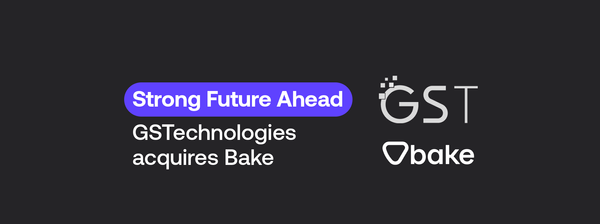Ethena (ENA): The Scalable Synthetic Dollar Protocol
In the volatile world of crypto, stability is a rare commodity. Everyday investors and crypto newcomers are often put off by crypto’s extreme volatility.
Stablecoins offer some solution to this, but the major ones are all centralized, and previous attempts at decentralized solutions have failed catastrophically (e.g., Terra Luna).
However, one project has decided to take it upon themselves to solve the issue of stability once and for all — Ethena (ENA).
What is Ethena?
Built on the Ethereum network, Ethena utilizes blockchain technology to offer a stable, reliable, and accessible digital currency.
The core of Ethena's ecosystem is its synthetic asset, USDe. USDe is designed to maintain a 1-to-1 peg with the US dollar using staked Ether (ETH). This method is designed to capitalize on the returns from staked ETH alongside additional profits from perpetual and futures market settlements to create an on-chain crypto ‘bond.’
Similar to the role of U.S. Treasury bonds in traditional finance, Ethena’s crypto bonds give users (in certain jurisdictions) access to a dollar-denominated savings tool. It also provides essential collateral for the DeFi sector, offering an uncensorable, stable, yield-generating asset that is fully decentralized.
Ethena’s vision has been met with significant support from the investment community. Binance Labs, Gemini, Bybit, Mirana Ventures, OKX Ventures, Deribit, Dragonfly and other notable venture capital have contributed over $20 million in funding to Ethena Labs (the company behind Ethena).
How Does Ethena Work?
The functionality of Ethena is an innovative blend of blockchain technology and financial strategy centered around its stable asset, USDe.
The Role of USDe and ETH Collateral
USDe is pegged 1/1 to the US Dollar. This peg is backed by ETH that users stake as collateral. However, the nature of cryptocurrencies like ETH is inherently volatile. A significant drop in ETH's price can adversely affect USDe’s stability, which is reminiscent of the challenges faced by UST in the Luna ecosystem. This volatility means a more robust mechanism is needed to maintain the peg.
Implementing Delta Hedging for Stability
To mitigate the risks of ETH’s volatility, Ethena employs a strategy known as delta hedging. This approach involves taking short positions in ETH or ETH-related derivatives. Essentially, this means betting against ETH's price movement to offset any loss in its value, thereby safeguarding USDe’s peg to the dollar.
Achieving Delta-Neutrality
This strategy is sound in theory, but it requires a careful balancing act to maintain. By opening a 1:1 short position against the ETH collateral (without leveraging), Ethena aims to keep the USDe’s overall value stable. This strategy has been named “achieving delta-neutrality,” and ensures the protocol's reliability and the stability of USDe.
Practical Application
Here's an example of how Ethena operates in practice:
- A user deposits $100 in stETH (staked ETH), receiving approximately 100 USDe in return (minus any fees).
- Ethena Labs then takes action by initiating a short perpetual position for a similar amount on a derivatives exchange.
- The assets are then handled by an “Off Exchange Settlement” system, which manages the user's stETH, reducing counterparty risks.
- The earnings Ethena makes from the user's stETH is distributed back to the user in the form of more USDe.
Future and Potential Challenges
Ethena’s unique position as a synthetic currency protocol opens doors to countless possibilities in the DeFi space. The protocol's design, which enables stability and accessibility, makes it an attractive option for a variety of different users. It could help attract more casual users to DeFi and be utilized as a default stable asset for more established DeFi participants.
However, the path ahead is not without obstacles. One of the primary challenges Ethena faces is its perceived similarities to Terra Luna. Terra Luna's downfall was caused by its stablecoin (UST) losing its peg to the US Dollar. Although Ethena’s protocol is significantly more advanced and uses a different stabilization method to Terra Luna’s, everyday users are still somewhat reluctant to use USDe due to Terra Luna’s infamous collapse.
How to Invest in Ethena
Ethena’s native token (ENA) is listed on multiple major exchanges (both decentralized and centralized).
ENA will be listed on Bake directly in the coming months. However, if you're looking for projects similar to Ethena, check out Bake’s Ethereum's Scaling Race Bundle.

DISCLAIMER: Please note that the information on this blog and in any articles posted on this blog is for general information only and should not be relied upon as financial advice. Cake Pte. Ltd., Cake DeFi, UAB, and its affiliates (the “Cake Group”) are not licensed financial advisers. You may wish to approach your own independent financial advisor before making any decision to buy, sell or hold any product and/or digital assets mentioned in this blog.
Any views, opinions, references, assertions of fact and/or other statements are not necessarily the views held by the Cake Group. The Cake Group disclaims any liability whatsoever that may arise out of or in connection with such statements. Always do your own research before investing in any financial assets and consult a qualified financial advisor if necessary.




